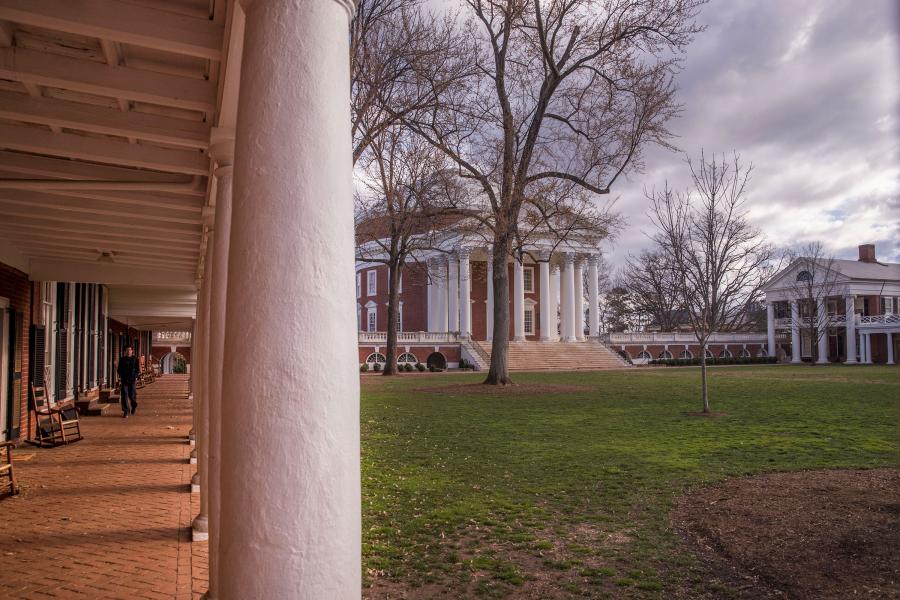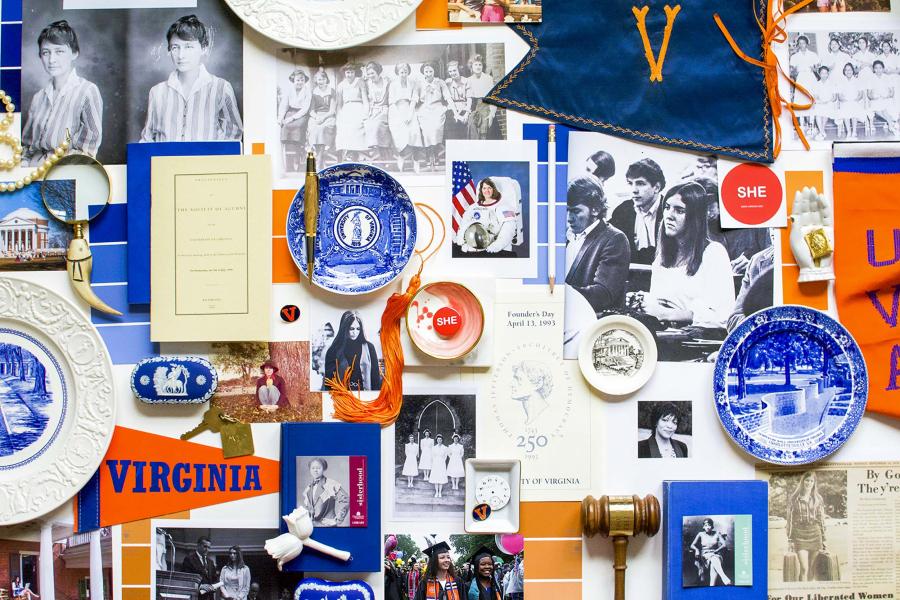Outside of the University of Virginia’s Peabody Hall, where the Office of Admission is located, a new historical marker recaps the 1969 legal case that brought full coeducation to the Grounds.
Inside the building, potential students, their families and others can view a portrait of Cynthia Goodrich Kuhn, one of the first women admitted to UVA in 1970 “without regard to sex,” thanks to the history-changing lawsuit.
The commemorative pieces are part of a 2018 initiative that grew out of a special University committee. The Advisory Committee on the Future of the Historic Landscape at UVA made recommendations on the installation of portraits and markers highlighting important people, moments and places around Grounds. Initial items feature a portrait of George Keith Martin, the first African American to serve as University rector, on the second floor of Wilson Hall, and the installation of a historical marker commemorating the “Coat and Tie Rebellion,” located near Pavilion I.
Although the Board of Visitors had voted in 1969 to gradually admit women into all of UVA’s schools over 10 years, four women brought a class-action suit against the University, challenging the constitutionality of the University’s admissions policies for the College of Arts & Sciences. One of the group’s attorneys was a young UVA law alumnus, the late John C. Lowe, who argued against the board’s restrictive plan.
A three-judge panel found the University’s proposal inadequate, and the plaintiffs and defendants worked on a subsequent plan that hastened the enrollment of women to two years. In 1970, 450 women were admitted to the College, and the following year, the number increased to 550. As of the 1972-73 academic year, the new plan lifted the cap.
Cynthia Goodrich Kuhn succeeded at UVA in that first cohort of women enrolled in 1970. One indicator: in her final year, the international relations major became the first woman selected to live in a student room on the Lawn, a coveted achievement for fourth-year students.





